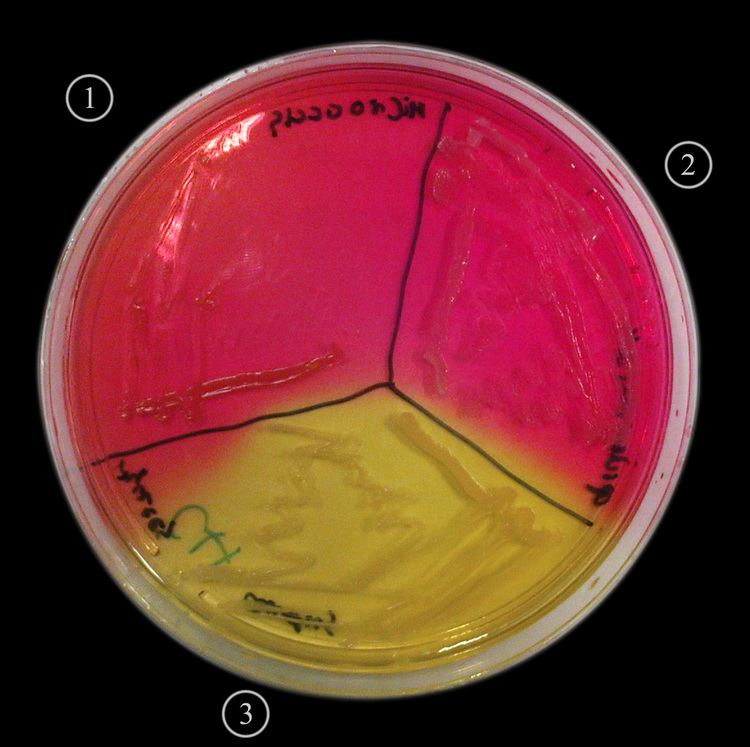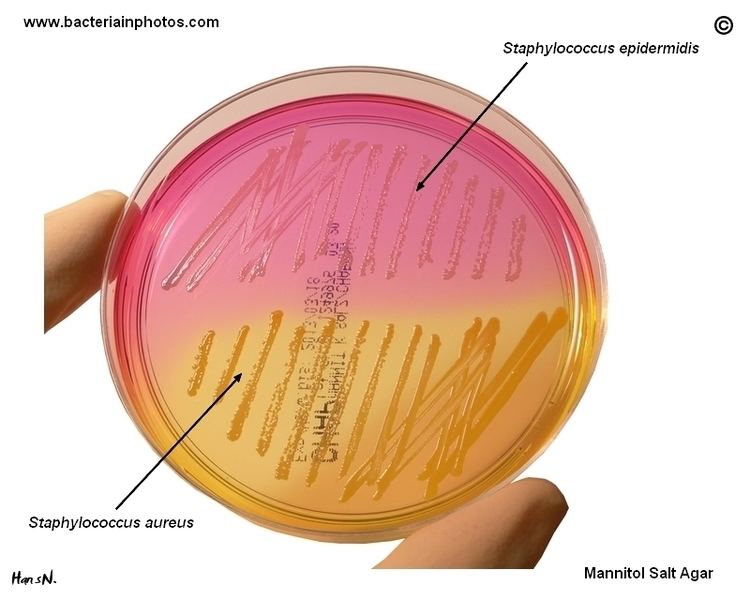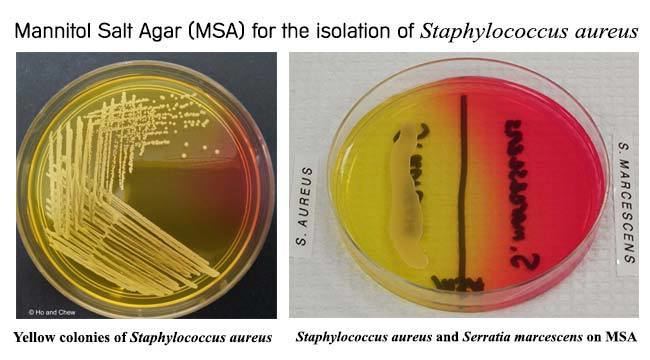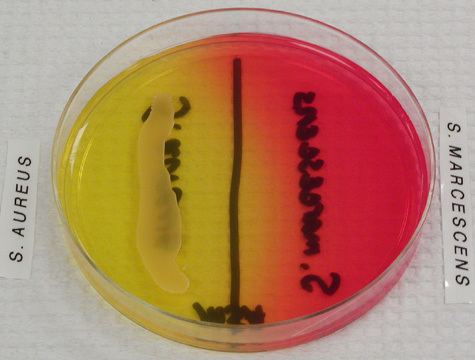 | ||
How to interpret mannitol salt agar bacterial growth medium
Mannitol salt agar or MSA is a commonly used selective and differential growth medium in microbiology. It encourages the growth of a group of certain bacteria while inhibiting the growth of others. This medium is important in medical laboratories by distinguishing pathogenic microbes in a short period of time. It contains a high concentration (about 7.5%-10%) of salt (NaCl), making it selective for Gram-positive bacteria (Staphylococcus and Micrococcaceae) since this level of salt is inhibitory to most other bacteria. It is also a differential medium for mannitol-fermenting staphylococci, containing carbohydrate mannitol and the indicator phenol red, a pH indicator for detecting acid produced by mannitol-fermenting staphylococci. Staphylococcus aureus produces yellow colonies with yellow zones, whereas other coagulase-negative staphylococci produce small pink or red colonies with no colour change to the medium. If an organism can ferment mannitol, an acidic byproduct is formed that causes the phenol red in the agar to turn yellow. It is used for the selective isolation of presumptive pathogenic (pp) Staphylococcus species.
Contents
- How to interpret mannitol salt agar bacterial growth medium
- Mannitol salt agar
- Expected results
- Typical composition
- References

Mannitol salt agar
Expected results

Typical composition
MSA typically contains:

